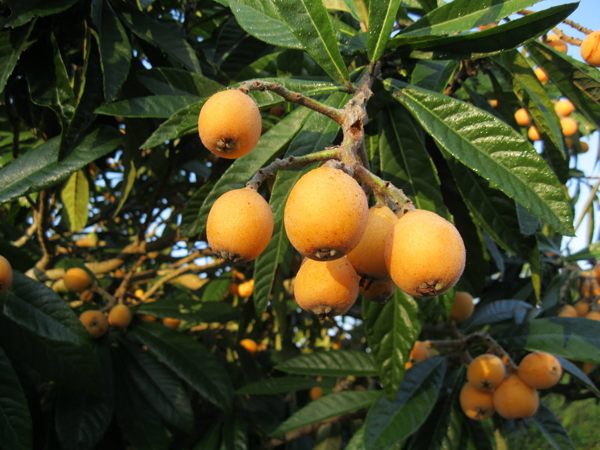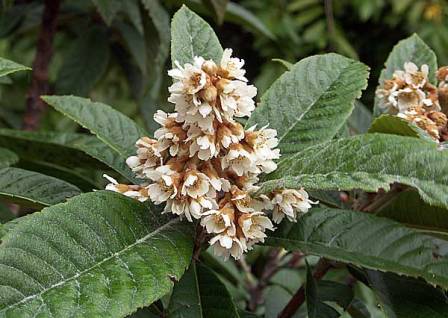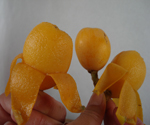
Loquat (Eriobotrya japonica)
The loquat .Eriobotrya japonica, is a fruit tree in the family Rosaceae, indigenous to southeastern China. It was formerly thought to be closely related to the genus Mespilus, and is still sometimes known as the Japanese medlar. It is also known as Japanese plum and as Chinese plum.
The leaves are alternate, simple, 10ĘC25 cm long, dark green, tough and leathery in texture, with a serrated margin, and densely velvety-hairy below with thick yellow-brown pubescence; the young leaves are also densely pubescent above, but this soon rubs off.
Loquats are unusual among fruit trees in that the flowers appear in the autumn or early winter, and the fruits are ripe in late winter or early spring. The flowers are 2 cm diameter, white, with five petals, and produced in stiff panicles of three to ten flowers. The flowers have a sweet, heady aroma that can be smelled from a distance. |
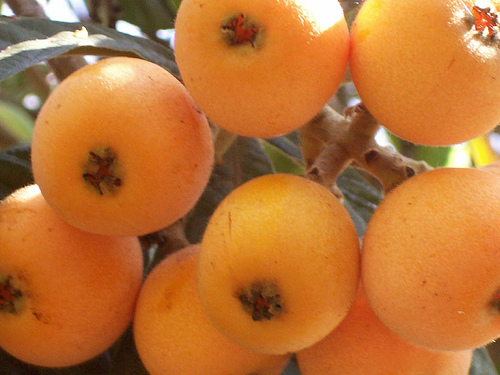
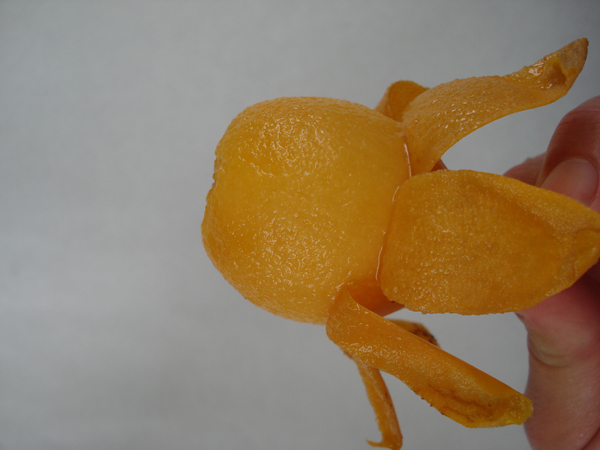
Loquat fruits, growing in clusters, are oval, rounded or pear-shaped, 3ĘC5 cm long, with a smooth or downy, yellow or orange, sometimes red-blushed skin. The succulent, tangy flesh is white, yellow or orange and sweet to subacid or acid, depending on the cultivar. Each fruit contains five ovules, of which one to five mature into large brown seeds. The skin, though thin, can be peeled off manually if the fruit is ripe. |
